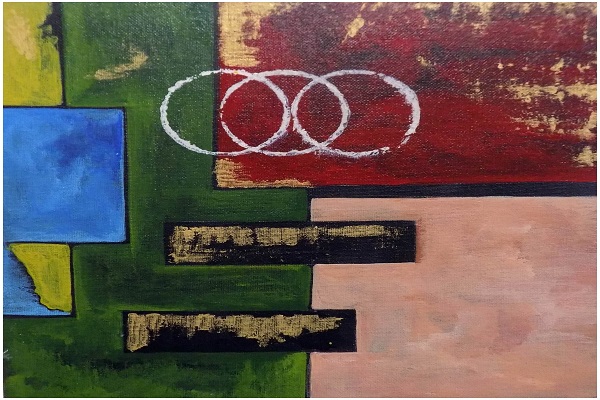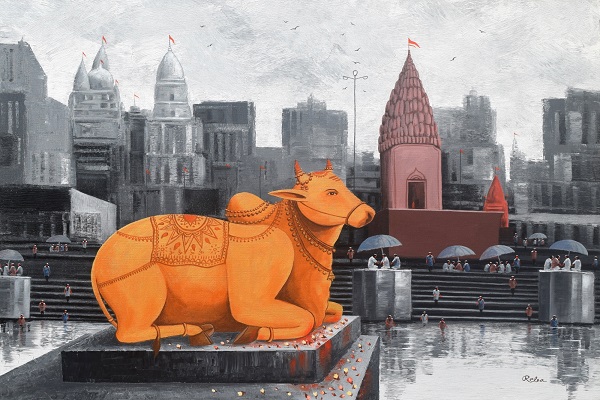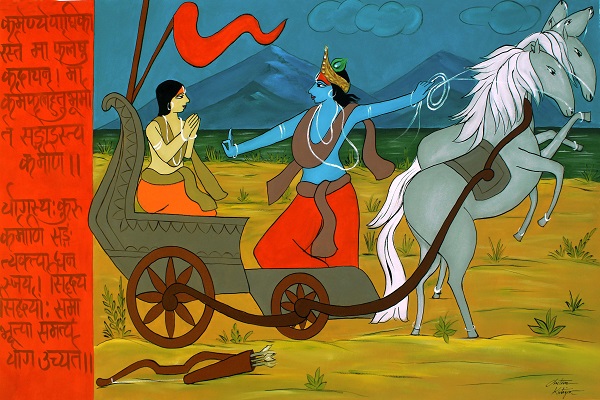
"Art is the most intense mode of individualism that the world has known." Oscar Wilde's remarks encapsulate the core of how art maintains cultures, awakens emotions, and crosses boundaries. In the current digital era, when everything is connected by screens and pixels, the art world has not been spared. Indian art and the virtual art world combine to create a lively and dynamic intersection where innovation and tradition meet to preserve the cultural legacy and embrace the future.
There's a good reason why Indian art for sale online is attracting the attention of more and more art enthusiasts, collectors, and interested people.
"The art of a people is a true mirror of their minds." - Jawaharlal Nehru
Jawaharlal Nehru, India's first Prime Minister, understood the profound connection between art and the Indian mindset. His statements are a strong hook because they resonate with the inextricable link between Indian art and its cultural importance.
As we embark on our journey into online art, we ask ourselves why Indian art counts in the digital age. What draws us to it, and what mysteries does it hold about India's rich history, culture, and beliefs?
It will become clear from our exploration of Indian art and its cultural importance that Indian art is more than simply beautiful, especially when it is offered for sale online. It is a testament to a rich history that encompasses a wide range of civilizations, morals, and creative expressions.
We shall examine in this blog why Indian art is more than just a product; rather, it is a cultural link that unites the past and present, bridging distances and motivating the global audience.
Now, let's delve into the reasons for the immense cultural relevance of Indian art in the online art community, taking into account the complexities of its development and its influence on the domains of art, culture, and legacy.
Indian Art: An Authentic and Cultural Tapestry
Explore Indian art and be immersed in its colorful, emotional, and narrative kaleidoscope. Moreover, it maintains a profound connection with the philosophical tenets, religious doctrines, and historical tapestry of the subcontinent. Ranging from the bold, impassioned brushwork of modern-day artists to the nuanced intricacies found in Mughal miniature masterpieces, Indian art encapsulates the essence of a nation boasting a multifaceted and opulent cultural heritage.
Indian Art's Evolution in the Digital Age
The issues and challenges of moving Indian art from brick-and-mortar galleries to virtual spaces are numerous. Because of the revolution in art for sale online, which has revolutionized the way art is bought and sold, art is now available to a worldwide audience. Artists may now access a broader audience through e-commerce and online art markets, democratizing the art form. Indian art has been more popular on online platforms because of the convenience they offer to both buyers and sellers.
Indian Art's Cultural Significance Online
Let's address the core of the matter now: Why is Indian art significant in the online art community? To respond to this inquiry, we must assess a few crucial elements that demonstrate the cultural significance of Indian art in the digital era.
1. Heritage Preservation:
Indian art is a cultural time capsule that holds the thousands of years worth of cultural heritage of a civilization. Indian art depicts the stories of its people, their beliefs, and their way of life, from the vivid Madhubani painting to the Ajanta cave paintings. The world of online art operates like a digital museum, enabling art enthusiasts to discover and take in these priceless works of cultural art without being constrained by space or time.
2. Global Engagement:
Indian art possesses the exceptional ability to transcend linguistic and cultural barriers. All around the world, it arouses curiosity and inspires admiration. Indian art may now be found in people's homes and hearts all around the world thanks to online platforms. As more enthusiasts and collectors of art from all backgrounds take an interest in Indian art, it acts as a bridge across cultures, creating a sense of unity and mutual appreciation.
3. Artist Support:
The online art sector benefits both established and emerging Indian artists. It gives them a place to show their work, gain recognition, and engage with a diverse audience. This support for artists exemplifies the lively and rising Indian art scene, ensuring that the art tradition thrives.
4. Cultural Awareness and Exchange:
Layers of meaning and importance in Indian art are usually hidden from those outside the culture. The online art world, on the other hand, provides for cultural engagement and understanding. It invites viewers to delve deeper into the artwork's stories, traditions, and spiritual significance. A greater awareness of Indian culture and artistic expressions results from this interaction.
5. Academic Value:
Indian art online inspires and amuses while also imparting knowledge. It has a wealth of knowledge on the traditions, history, and techniques of Indian art. Online resources usually include in-depth explanations, biographies of the artists, and articles that aid in understanding and education.
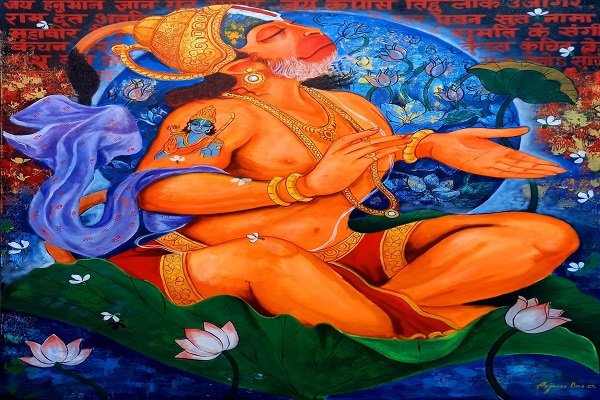
Case Studies: Online Success Stories of Indian Art
Let's examine some case studies and success stories that show the significance of online platforms in promoting and upholding this rich cultural tradition to illustrate the cultural worth of Indian art in the online art community.
1. Discover New Talent:
The public's awareness of talented but undiscovered artists has been greatly aided by online art venues. Ramesh's story, which centers on a young Indian artist from a far-off hamlet, is a prime example of the power of online visibility. An online art show included Ramesh's work, which is based on traditional Indian designs. His paintings caught the attention of collectors in North America and Europe, and he went from being unknown to becoming well-known worldwide. This enlarged the horizons of those who appreciated Ramesh's paintings in addition to changing his own life.
2. Dying Art Forms' Resurrection:
Online platforms have contributed to the resurgence of several traditional Indian art forms that were in danger of disappearing. Pattachitra, an Odisha-style scroll painting style, was almost extinct. Nevertheless, dedicated artists and collectors on online platforms saw its value and started to market it. Pattachitra's comeback brought attention to the intricate story and craftsmanship of the art form, preserving it for the next generations.
3. Overcoming Generational Gaps:
Indian art online serves as a generational bridge. With the world becoming more interconnected through technology, the younger generation is turning away from traditional means of artistic expression. On the other hand, older artists and their expertise may now find a new audience thanks to online outlets. Young artists, on the other hand, have embraced digital tools to recreate traditional art forms, creating a vibrant blend of the past and present.
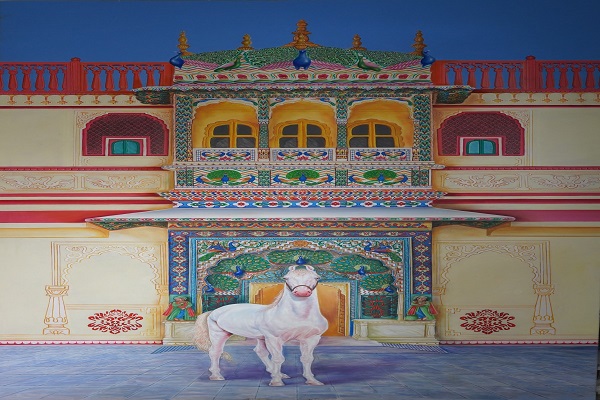
Read More: Why Indian Art Deserves a Place in Your Home: The Beauty of Cultural Expression
Summing Up!
We have uncovered the subtleties and enormous influence of this enduring legacy in our investigation of the cultural relevance of Indian art in the online art community. Oscar Wilde's statement, which emphasized the intensity of art as a kind of individualism and the mirror it provides to the human soul, kicked off our voyage. Following that, we explored the core meaning of Jawaharlal Nehru's quotations to understand the close relationship between Indian culture and art.
Our investigation revealed the rich tapestry of Indian art, in which the history, spirituality, and variety of the nation are captured in every brushstroke and hue. We looked at how Indian art moved from being displayed in physical galleries to being available online, shedding insight into how online platforms may revolutionize the way art is viewed by people all over the world.
We also looked at the cultural relevance of Indian art online and found important factors that highlight its importance. These factors include the preservation of cultural history, outreach to a global audience, support for artists, exchange and understanding of cultures, and the educational value of Indian art to its global audience.
The case studies we examined presented actual success stories in which online platforms supported and preserved traditional artistic forms while also providing a means for up-and-coming artists to gain international acclaim. The past and present may now cohabit because of the online age that has closed generational divides.
Therefore, to discover more and to be informed about the world of Indian art, sign up for our newsletter. Discover a wide range of Indian artwork that represents the rich cultural history of the subcontinent by browsing our online collection. If you have any inquiries or would want more information about obtaining an Indian artwork that resonates with your soul, please get in touch with us. You have only just begun your exploration of the cultural significance of Indian art.





















